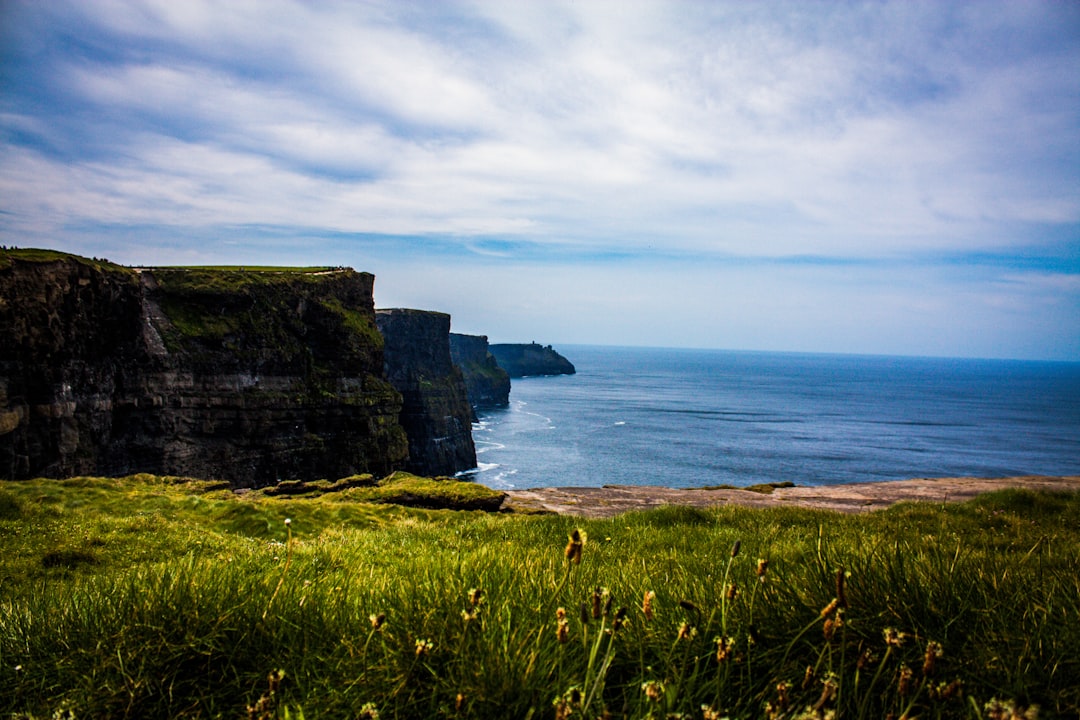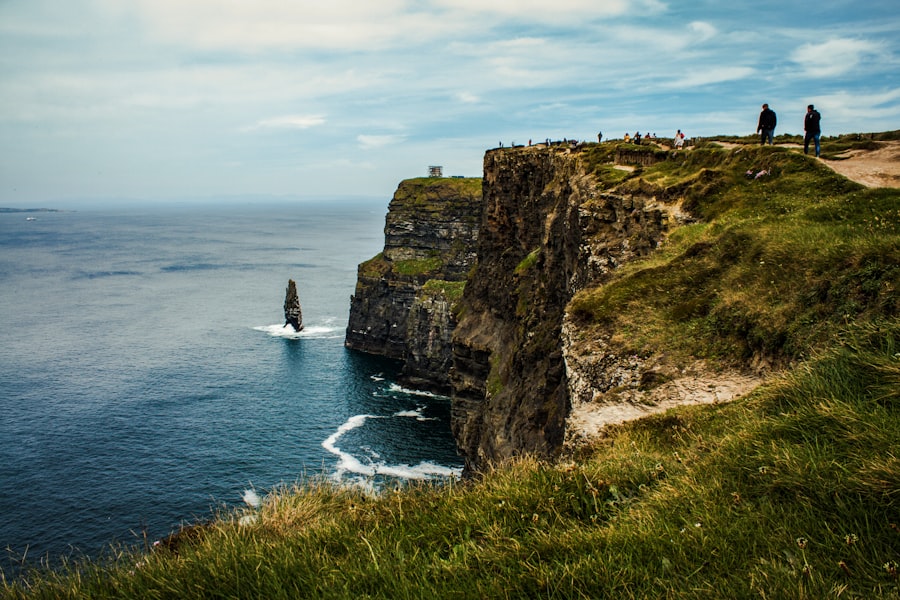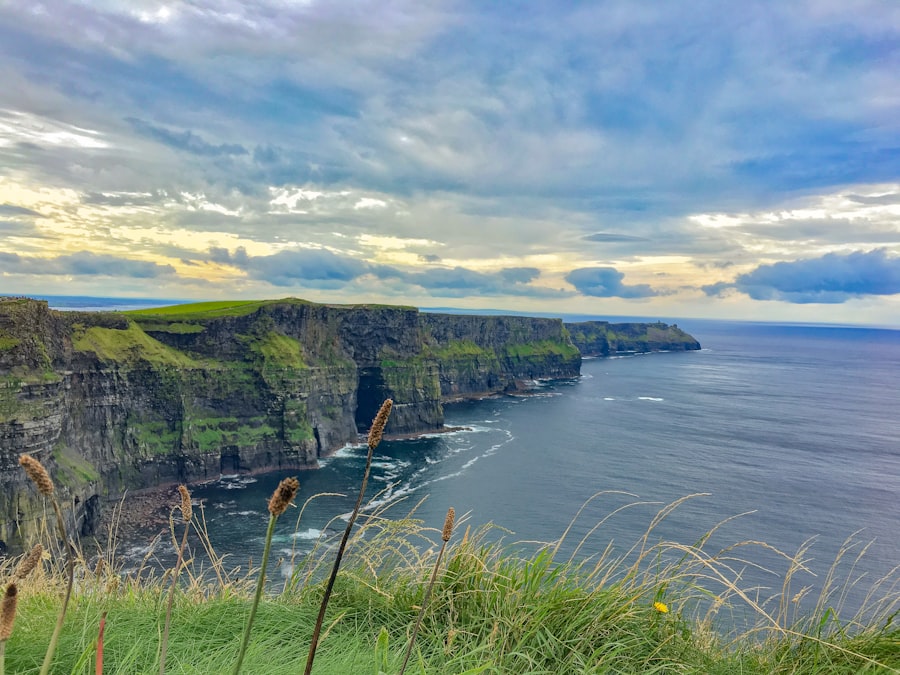
Ireland, often referred to as the Emerald Isle, is a land steeped in rich history, vibrant culture, and breathtaking landscapes. Located in the North Atlantic, it is the third-largest island in Europe and the twentieth-largest island in the world. The island is divided into two political entities: the Republic of Ireland, which occupies about five-sixths of the island, and Northern Ireland, which is part of the United Kingdom.
The capital of the Republic is Dublin, a city known for its literary heritage and lively atmosphere, while Belfast serves as the capital of Northern Ireland, renowned for its industrial history and cultural revival. The Irish landscape is characterized by rolling green hills, rugged coastlines, and dramatic cliffs, making it a haven for nature lovers and outdoor enthusiasts. The country’s climate is largely influenced by the Atlantic Ocean, resulting in mild winters and cool summers, which contribute to its lush greenery.
Beyond its natural beauty, Ireland boasts a rich tapestry of folklore, music, and dance that has captivated people around the globe. The Irish language, Gaelic, is still spoken in certain regions, adding to the cultural depth of this enchanting island. With a population of approximately 4.9 million in the Republic and around 1.9 million in Northern Ireland, the Irish people are known for their warmth and hospitality, making visitors feel at home.
Key Takeaways
- Ireland is a beautiful country with a rich history and stunning natural landscapes.
- Historical landmarks and sites in Ireland include the ancient Newgrange passage tomb and the Rock of Cashel.
- The natural wonders of Ireland include the Cliffs of Moher and the Giant’s Causeway.
- Quaint towns and villages like Kinsale and Adare offer a glimpse into traditional Irish life.
- Famous Irish castles and fortresses such as Blarney Castle and Dublin Castle are must-see attractions.
- Traditional Irish cuisine includes dishes like Irish stew, soda bread, and seafood chowder.
Historical Landmarks and Sites in Ireland
Ireland is a treasure trove of historical landmarks that tell the story of its tumultuous past. One of the most iconic sites is the Rock of Cashel, also known as St. Patrick’s Rock. This ancient fortress complex is perched on a limestone hill in County Tipperary and features a stunning collection of medieval architecture, including a round tower, Cormac’s Chapel, and a high cross. According to legend, it was here that St. Patrick converted the King of Munster to Christianity in the 5th century. The site not only offers a glimpse into Ireland’s ecclesiastical history but also provides breathtaking views of the surrounding countryside. Another significant historical landmark is Newgrange, a prehistoric passage tomb located in County Meath. Dating back to around 3200 BC, Newgrange predates Stonehenge and the Great Pyramids of Giza. This UNESCO World Heritage Site is renowned for its winter solstice phenomenon; each year, during the winter solstice, sunlight illuminates the inner chamber as it aligns perfectly with the entrance passage. The intricate carvings on the stones surrounding Newgrange showcase the artistry and spiritual beliefs of Neolithic people. Visitors to this ancient site are often left in awe of its engineering marvels and the mysteries that still surround its purpose.
Natural Wonders and Scenic Landscapes of Ireland

Ireland’s natural wonders are as diverse as they are breathtaking. The Cliffs of Moher, located on the west coast in County Clare, rise dramatically from the Atlantic Ocean to heights of over 700 feet. These sheer cliffs stretch for about five miles and offer panoramic views that have inspired countless poets and artists throughout history.
The cliffs are home to a variety of seabirds, including puffins and razorbills, making it a popular destination for birdwatchers and nature enthusiasts alike. The visitor center provides educational exhibits about the geology and ecology of the area, enhancing the experience for those who venture to this iconic location. Another remarkable natural wonder is the Giant’s Causeway in Northern Ireland, a UNESCO World Heritage Site famous for its unique hexagonal basalt columns formed by volcanic activity around 60 million years ago.
According to local legend, these columns were built by the giant Finn McCool as a pathway to Scotland. The site attracts visitors not only for its geological significance but also for its stunning coastal scenery. Walking along the causeway allows one to appreciate the interplay between land and sea while marveling at the natural artistry created by ancient geological forces.
Quaint Towns and Villages to Explore in Ireland
| Town/Village | County | Population | Main Attractions |
|---|---|---|---|
| Kinsale | Cork | 5,281 | Charles Fort, Kinsale Harbour |
| Adare | Limerick | 2,650 | Adare Manor, Desmond Castle |
| Dingle | Kerry | 1,920 | Dingle Peninsula, Fungi the Dolphin |
| Westport | Mayo | 5,543 | Croagh Patrick, Westport House |
Ireland is dotted with charming towns and villages that offer a glimpse into traditional Irish life. One such place is Dingle, located on the Dingle Peninsula in County Kerry. This picturesque town is known for its colorful storefronts, lively pubs featuring traditional music sessions, and stunning coastal views.
Dingle is also famous for its friendly resident dolphin named Fungie, who has been delighting visitors for decades. The town serves as a gateway to explore the breathtaking landscapes of the peninsula, including Slea Head Drive, which offers some of the most stunning coastal scenery in Ireland. Another delightful village worth exploring is Adare in County Limerick.
Often referred to as one of Ireland’s prettiest villages, Adare is characterized by its thatched-roof cottages and beautifully manicured gardens. The village is steeped in history, with remnants of medieval architecture such as Adare Manor and Desmond Castle. Visitors can stroll along the River Maigue or enjoy afternoon tea at one of the charming cafes while soaking in the tranquil atmosphere.
Adare also hosts various festivals throughout the year, celebrating everything from food to music, making it a vibrant hub of local culture.
Famous Irish Castles and Fortresses
Ireland’s landscape is adorned with numerous castles and fortresses that reflect its storied past. One of the most famous is Blarney Castle in County Cork, renowned for its Blarney Stone—a block of limestone said to bestow the gift of eloquence upon those who kiss it. The castle itself dates back to the 15th century and features beautiful gardens that invite exploration.
Visitors can wander through the castle’s ruins and climb to the top for stunning views of the surrounding countryside. Another notable fortress is Kilkenny Castle, which has stood since the 12th century and serves as a symbol of Kilkenny’s medieval heritage. The castle has undergone extensive restoration and now houses an impressive collection of art and furniture from various periods.
The surrounding parkland offers a peaceful retreat for visitors looking to enjoy a leisurely stroll or a picnic amidst historical surroundings. Kilkenny Castle not only showcases architectural grandeur but also provides insight into Ireland’s feudal past.
Culinary Delights and Traditional Irish Cuisine

Irish cuisine has evolved over centuries, influenced by both local ingredients and historical events. Traditional dishes often feature hearty ingredients such as potatoes, lamb, beef, and seafood. One quintessential dish is Irish stew, typically made with tender lamb or beef simmered with root vegetables like carrots and potatoes.
This comforting meal reflects Ireland’s agricultural heritage and is often enjoyed with a slice of soda bread on the side. Another beloved culinary delight is boxty, a traditional potato pancake that varies from region to region.
This dish exemplifies how Irish cuisine celebrates simple yet flavorful ingredients. In addition to traditional fare, Ireland has seen a culinary renaissance in recent years with an emphasis on farm-to-table dining experiences. Many restaurants now focus on sourcing local produce and meats, showcasing seasonal ingredients in innovative ways.
The rise of artisan food producers has also contributed to this movement, with everything from craft cheeses to artisanal breads gaining popularity among locals and visitors alike. The vibrant food scene extends beyond traditional dishes; contemporary Irish cuisine often incorporates global influences while maintaining a strong connection to local traditions. Food festivals celebrating regional specialties are common throughout the year, allowing visitors to immerse themselves in Ireland’s culinary culture while sampling an array of flavors that reflect both heritage and innovation.
In summary, Ireland offers an abundance of historical landmarks, natural wonders, quaint towns, majestic castles, and culinary delights that together create an unforgettable experience for anyone who visits this enchanting island. Each aspect contributes to a rich tapestry that showcases not only Ireland’s past but also its vibrant present and promising future.
If you’re intrigued by the rich tapestry of history and culture found in Ireland, you might also enjoy exploring similar insights about other places.
You can learn more about Milwaukee’s key attractions and historical facts by visiting Milwaukee Facts and Places to Visit. This article provides a comprehensive overview of what makes Milwaukee a noteworthy destination, much like our coverage of Ireland’s unique places and sights.
FAQs
What are some interesting facts about Ireland?
– Ireland is known as the “Emerald Isle” due to its lush green landscape.
– The country is home to over 30,000 castles and ruins, showcasing its rich history.
– Ireland is famous for its traditional music, dance, and literature, with many renowned writers and poets hailing from the country.
– The Cliffs of Moher, located on the west coast, are one of Ireland’s most popular natural attractions, reaching heights of up to 702 feet.
What are some must-visit places in Ireland?
– Dublin: The capital city is known for its vibrant nightlife, historic landmarks, and cultural attractions such as the Guinness Storehouse and Trinity College.
– Ring of Kerry: This scenic drive offers breathtaking views of Ireland’s coastline, mountains, and lakes.
– Giant’s Causeway: Located in Northern Ireland, this UNESCO World Heritage site features unique hexagonal basalt columns formed by volcanic activity.
– Blarney Castle: Visitors can kiss the famous Blarney Stone for the gift of eloquence and explore the castle’s beautiful gardens.
What are some iconic sights in Ireland?
– The Book of Kells: Housed in Trinity College, this illuminated manuscript dating back to the 9th century is a masterpiece of medieval art.
– Rock of Cashel: This ancient fortress complex includes a round tower, high crosses, and a cathedral, overlooking the Tipperary countryside.
– Skellig Michael: This remote island is home to an ancient monastic settlement and was featured in the Star Wars film “The Force Awakens.”
– Kylemore Abbey: Set against the backdrop of Connemara’s mountains, this stunning abbey and Victorian walled garden is a popular tourist attraction.



